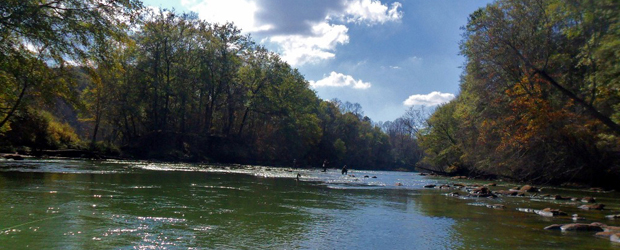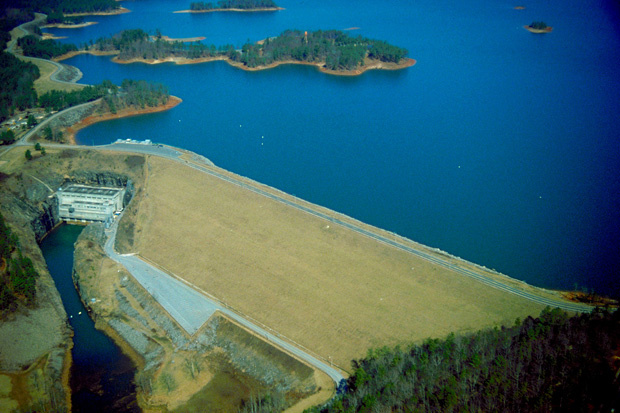Tailwater stupid
[dropcap]T[/dropcap]ailwater is a noun and new to our vocabulary because it’s definition, water below a dam or waterpower development, is relatively new historically speaking.
Tailraces are artificial environments. The dam’s turbines draw chilled water from the bottom of a deep reservoir or lake, creating or adding to an existing river, water cold enough to support trout and other species of fish.

Autumn is a very good time to fish fly fishing the Chattahoochee River, (Tailwater) Georgia. Image www.perfectflystore.com.
Singularly, a dam un-flows a river and that interrupts, and most times ends spawning, from sea run animals that return to fresh water to grow their stocks. That said, there are values to dams. In Georgia, dams make up every lake in the state and they have ingress and egress with both ends of the lake being rivers. In some cases, several rivers and stream provide both inflow and outflow of a lake and produce excellent trout, bass, striped bass and hybrid bass waters in Georgia.
Fly fishing tailwaters is not without problems
For instance, unaware and unvarnished in new surroundings of a trout setting, I fished the tailwaters of the Chattahoochee River, or “Hooch” as the locals call it, at the Buford Dam (north of Atlanta, Georgia). That tailwater holds brown trout (some reproduction and holdovers), rainbows (stocked with some holdovers) and other animals. What failed me was understanding the dam’s timed releases of water.
When Lake Lanier gets too much water from rain the Corps of Engineers (COE), managers of the dam, signal impending releases online (but it’s not always accurate) and at the point and time of release a warning horn.
Late this spring, on a cold rainy Georgia day, I was successfully fishing the “Hootch” tailwaters near the Buford dam. Two bows and a smallish brown had come to my net in two hours.
Ignorant of both online source for water releases and blasts of impending water releases at the dam, and an unknown distance from the dam, the muffled sound of the warning blast was quickly forgotten.
I was in knee deep when when it hit and I struggled mightily to paddle to land. The dynamic of a magnified cubic feet per minute of water increase can be dramatic. I ignored obvious warning signs: more light debris in water suddenly appearing, water more stained, rocks disappearing ahead of me and the sound. The rise, in that solo event, arrived as a wall.
It was a few hours before I could paddle across the “Hootch” and get back to the opposite bank, retrace my steps, find the truck, get the kayak and leave – much the wiser.


